vintage cameras index home

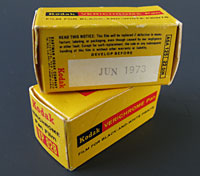

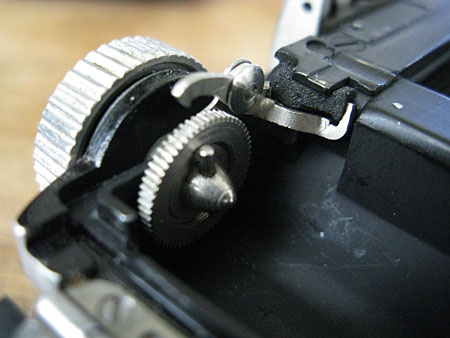

Kodak stopped producing 828-format film in 1985, but it is still easily possible to use the 828 cameras today, including the Kodak Bantams and the Argus M. Expired rolls of 828 film are often available on eBay and some new custom-rolled is sometimes available too. In either case, the film is a bit pricey, particularly since the little 828 rolls yield only eight exposures. Some ambitious enthusiasts cut down and re-roll 120 film to fit the 828 spools; while that nicely reproduces the original experience of using the camera, it is pretty labor intensive. A much easier alternative is to use standard 35mm film with no backing paper. The sprocket holes on the 35mm film will protrude slightly into the image, but the ease of use and increase in film length will compensate for the slight loss of image area.
The method I arrived at for using 35mm in my Flash Bantam requires two of the original 828 metal spools. I trim the protruding film leader square and tape it to one of the reels. The film is placed in a dark film changing bag and rolled onto the reel. The film is then cut loose from the cassette and taped onto the second reel, at which point it can be loaded into the camera which has had the back window previously taped to prevent exposure of the unbacked film in the camera. Advancing the film between exposures is done by rotating the winding wheel one-and-one half full turns for the first six or eight exposures, and one full turn for the remaining exposures. A 24-exposure roll of 35mm film will yield 15 to 20 frames per roll using this method. I develop and scan my own b&w film, but it is also possible to use commercial processing by putting the film back in the dark bag, taping the film end to the stub of film sticking out of the cannister and rolling it back in.
In addition to securely covering the frame window on the back of the camera, there are a couple other very simple camera modifications to the Flash Bantam which will greatly enhance the use of the camera with 35mm film, and also improve the images that will be captured by the coated Anastar lens. The little movable pawl that engages a toothed wheel allowed easy frame positioning with the original 828 film, but it is not needed and is a nuisance when loading and advancing 35mm film. To keep the pawl from slipping into the film sprocket holes you can easily introduce a small piece of foam rubber between the pawl's lever and an over-hanging tab on the camera body.
Some of my first 35mm film images from my Flash Bantam were lacking in contrast and showed a hot spot in the middle of the image. The image problem looked initially like lens flare, but the real origin was reflection at the time of exposure off the plastic framing window on the back of the camera. The simple fix was a strip of black paper cut to fit between the springs behind the pressure plate; if made the width of the camera back it will cover the shiny screw heads there as well as the reflective inner surface of the plastic window.
In shooting the Flash Bantam it is a good idea to aim a little high with the viewfinder in order to properly center the image between the film's sprocket holes.
My Flash Bantam needed just some cleaning of the lenses and a little squirt of electrical contact cleaner into the shutter to get it working properly. An excellent tutorial on Flash Bantam shutter repair can be found at the Camera Collecting and Restoration site.
A manual for the very similar Bantam 4.5 can be found at the Butkus site.
Below are some photos made with my Flash Bantam.
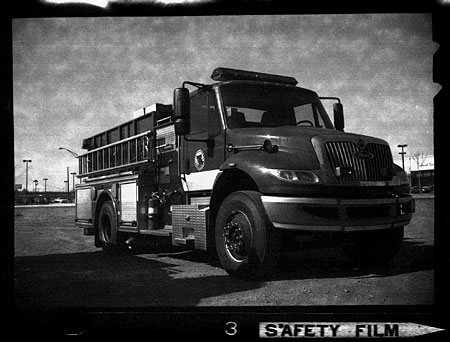
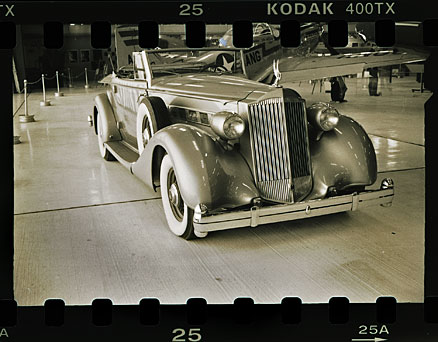
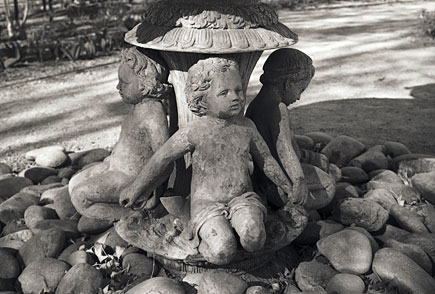
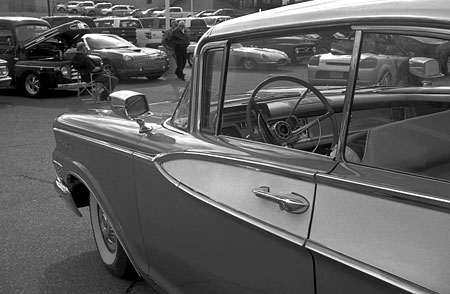
More about my experiences with the Flash Bantam will be found at my blog.
vintage cameras index home
 © mike connealy
© mike connealy